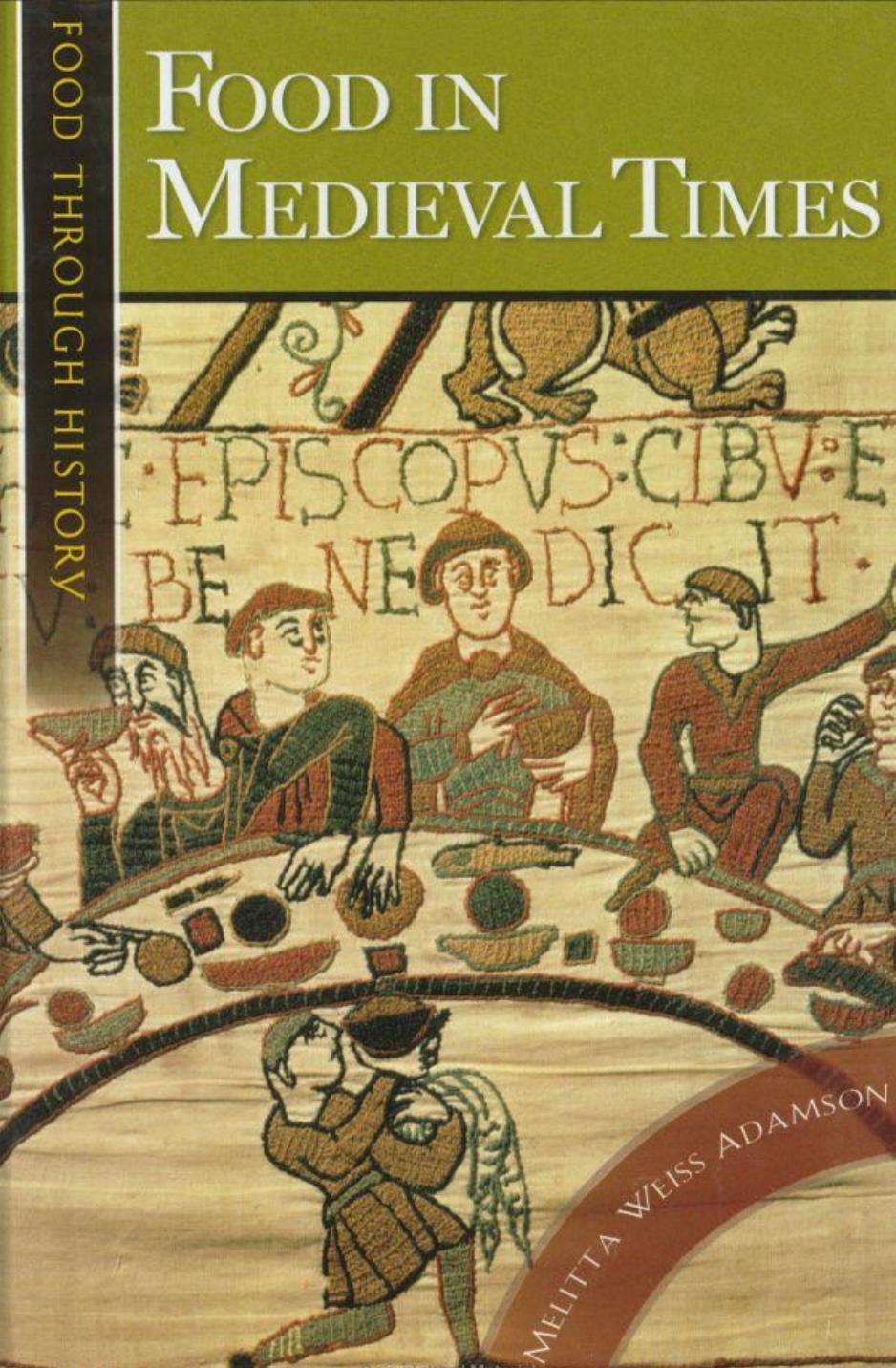Food in Medieval Times by Melitta Weiss Adamson

Author:Melitta Weiss Adamson
Language: eng
Format: mobi, epub, pdf
Tags: food & drink etc
ISBN: 9780313321474
Publisher: IB Dave's Library
Published: 2004-05-15T07:00:00+00:00
Pasta making. From Tacuinum sanitatis in medicina, 14th century. Cod. Vind. Series Nova 2644, fol. 45v. Courtesy of Österreichische Nationalbibliothek, Vi- enna (Photo: Bildarchiv, ÖNB Wien).
CUISINES BY REGION
of a filling that was usually encased in pastry made from flour and water. The big change came when Maestro Martino and other Italian cooks began to use flour in combination with eggs and oil or butter for the pastry. Known as torte, these pies with an edible crust quickly became the rage, especially among the newly rich. Like the oldfashioned pies, they had both a top and a bottom crust. They differed from the earlier pie versions not just in the type of crust, but also in the type of filling, which was generally more elaborate and included more expensive ingredients such as sugar and spices. The following torte recipe for eel would have been suitable for fast days:
Torta d’anguille fresche [Eel Torta (Pie)]
If you want to make a pie of fresh eels, take the eels, half-boil them, and cook with them parsley and mint and purslane [?], then cool and take them apart by hand. Discard the skin and the bones. Take good walnuts, skin them with boiling water, then crush them slightly. And take a libra [pound] of almonds, make them into milk, and cook it until it becomes very thick; and set it aside to cool; it will be a junket. Then put these things in a pan; make a crust; herbs should be chopped, and add strong spices, saffron, and twelve chopped dates. And when it is cooked, remove it; and if [the eels] were not fat, add good oil.155
In addition to these savory pies, there were also various kinds of sweet pies, such as the torta bianca, or white tart, which has been described by food historians as “one of Maestro Martino’s greatest gastronomic achievements.”156 The filling of the tart is made from finely cut fresh cheese, egg whites, sugar, ginger, pork lard, butter, and some milk. The covered pie is cooked with fire from both below and above, and served with fine sugar and rose water on top.157
Italian cookbooks, more so than those from many other parts of Europe, offer a wide range of recipes for vegetables and legumes. Broad beans, generally looked down upon as Lenten food for the poor, are the main ingredient in not just one but several recipes by Maestro Martino.158 His preferred way of preparing broad beans is with sage, onions, apples, and figs. A tasty little vegetable dish in Martino’s collection is called Finocchio, meaning “fennel.” The white part of fennel, and a little white leek are finely chopped, and fried with oil or salted pork. Then a little water, saffron, and salt are added and the dish is brought to a boil. Beaten eggs, presumably used as a thickener, are optional.159
Overall more pasta, fish, and vegetables were eaten in the south of Italy, and more meat was eaten in the north. Lamb, kid, suckling pig, 129
FOOD IN MEDIEVAL TIMES
and
Download
Food in Medieval Times by Melitta Weiss Adamson.epub
Food in Medieval Times by Melitta Weiss Adamson.pdf
This site does not store any files on its server. We only index and link to content provided by other sites. Please contact the content providers to delete copyright contents if any and email us, we'll remove relevant links or contents immediately.
A Court of Wings and Ruin by Sarah J. Maas(7264)
The Sprouting Book by Ann Wigmore(3409)
Better Homes and Gardens New Cookbook by Better Homes & Gardens(3371)
The Death of the Heart by Elizabeth Bowen(3342)
BraveTart by Stella Parks(3307)
Salt, Fat, Acid, Heat: Mastering the Elements of Good Cooking by Nosrat Samin(2998)
Sauces by James Peterson(2964)
The Bread Bible by Rose Levy Beranbaum(2887)
Classic by Mary Berry(2834)
Kitchen confidential by Anthony Bourdain(2831)
Solo Food by Janneke Vreugdenhil(2823)
Ottolenghi - The Cookbook by Yotam Ottolenghi(2738)
Martha Stewart's Baking Handbook by Martha Stewart(2676)
Betty Crocker's Good and Easy Cook Book by Betty Crocker(2598)
Day by Elie Wiesel(2593)
My Pantry by Alice Waters(2434)
The Plant Paradox by Dr. Steven R. Gundry M.D(2427)
The Kitchen Counter Cooking School by Kathleen Flinn(2396)
Hot Sauce Nation by Denver Nicks(2369)
